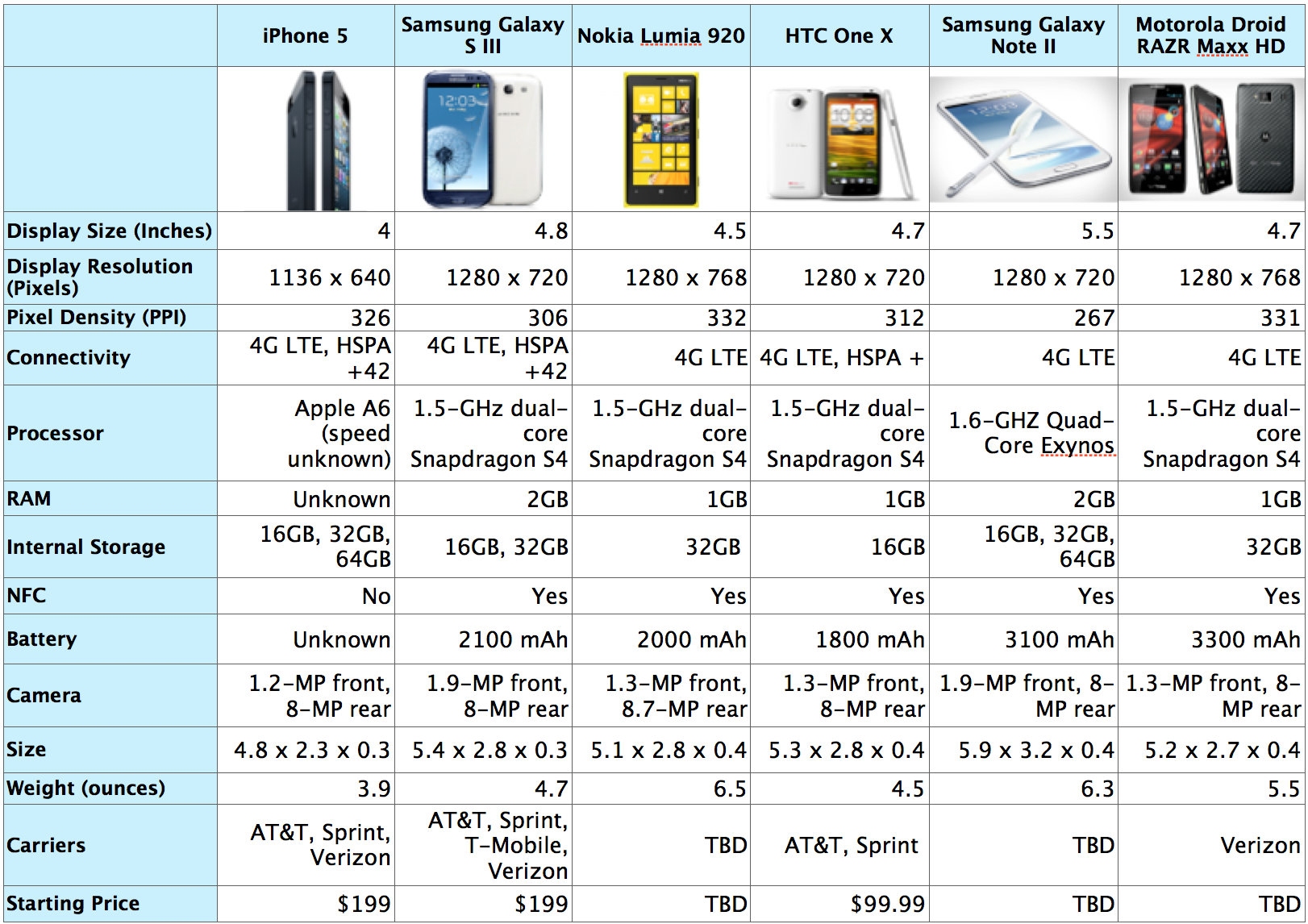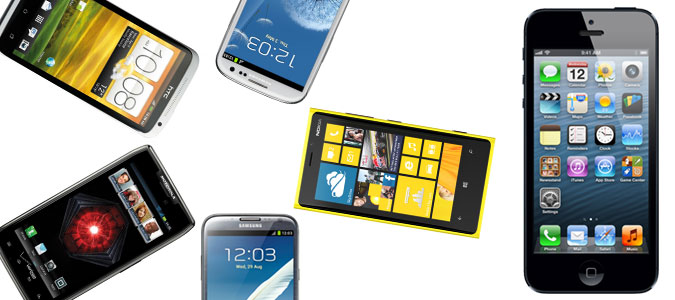iPhone 5 vs. the World: How Apple's Device Stacks Up

Apple's iPhone 5 features a larger display, more powerful processor and 4G LTE connectivity, but does that mean it's also the most advanced smartphone ever? We've broken down the specs of the iPhone 5 and four of the latest and greatest Android and Windows Phone 8 devices to see just how well Apple's newest device stacks up.
With a 4-inch, 1136 x 640 display and 326 pixels per inch, the iPhone 5's Retina Display is still one of the sharpest screens on the smartphone market. However, it falls short of the Nokia Lumia 920, which features a 4.5-inch 1280 x 768 display, (332 PPI), as well as the Motorola Droid RAZR HD Maxx, which features a 4.7-inch 1280 x 768 display (331 PPI). Still, the iPhone 5's display is sharper than the Samsung Galaxy S III's 4.8-inch 1280 x 720 screen, which offers 306 PPI.
MORE: iPhone 5 Hands-on Video and Impressions
When it comes to the processing power, Apple says the iPhone 5's new A6 processor is twice as fast as the iPhone 4S's A5 processor. The Nokia Lumia 920, Samsung Galaxy S III, Droid RAZR Maxx HD and HTC One X, each of which have 1.5-GHz dual-core Snapdragon S4 processors. Samsung's Galaxy Note II, however, rocks a 1.6-Ghz quad-core Exynos processor. Apple hasn't released clock speed numbers for the A6 yet, so a direct comparison isn't possible. We'll have to wait to get our hands on the phone to see how well it performs.
Connectivity-wise, the iPhone 5 marks the first time iPhone users get 4G LTE connectivity. This is essentially old hat for Android and Windows Phone devices, which have been using 4G LTE for quite some time now. Also, the iPhone 5 lacks NFC, a feature available on all the other devices in our chart below.

The iPhone 5's cameras also gets an upgrade, with the front camera now capable of shooting 720p video. The 8-megapixel rear-facing shooter takes up 25 percent less space than the one found on the iPhone 4S and features a new dynamic low light mode, sapphire crystal lens and next-generation ISP to enable noise reduction and 40 percent photo capture.
Its biggest competition will come from the Nokia Lumia 920's 8.7-megapixel PureView camera. Faked images notwithstanding, this smartphone is capable of taking excellent photos. There's no rapid fire mode, which is found on the Samsung Galaxy S III or HTC One X, but the iPhone 5 does have a new panorama mode. The iPhone 5's front-facing camera can shoot 1.2-megapixels, which is lower than the 1.9-megapixel front-facing camera offered by the Galaxy S III and 1.3-megapixel shooters found on the HTC One X and Nokia Lumia 920.
Stay in the know with Laptop Mag
Get our in-depth reviews, helpful tips, great deals, and the biggest news stories delivered to your inbox.
Apple touts the iPhone 5 as the thinnest smartphone on the market. At 0.3 inches thick, the iPhone is a hair thinner than the Samsung Galaxy S III, which measures 0.34 inches thick. The iPhone 5 is also lighter than the competition, weighing just 3.9 ounces. HTC's One X, by comparison weighs in at 4.5 ounces, while the massive Samsung Galaxy Note II weighs 6.3 ounces.
From a hardware perspective, the iPhone 5 compares fairly well against its competition, but lacks a few features, such as NFC and wireless charging. Still, we'll hold our final judgments on Apple's newest phone until we run our full suite of tests. Stay tuned for our full review of the iPhone 5.

